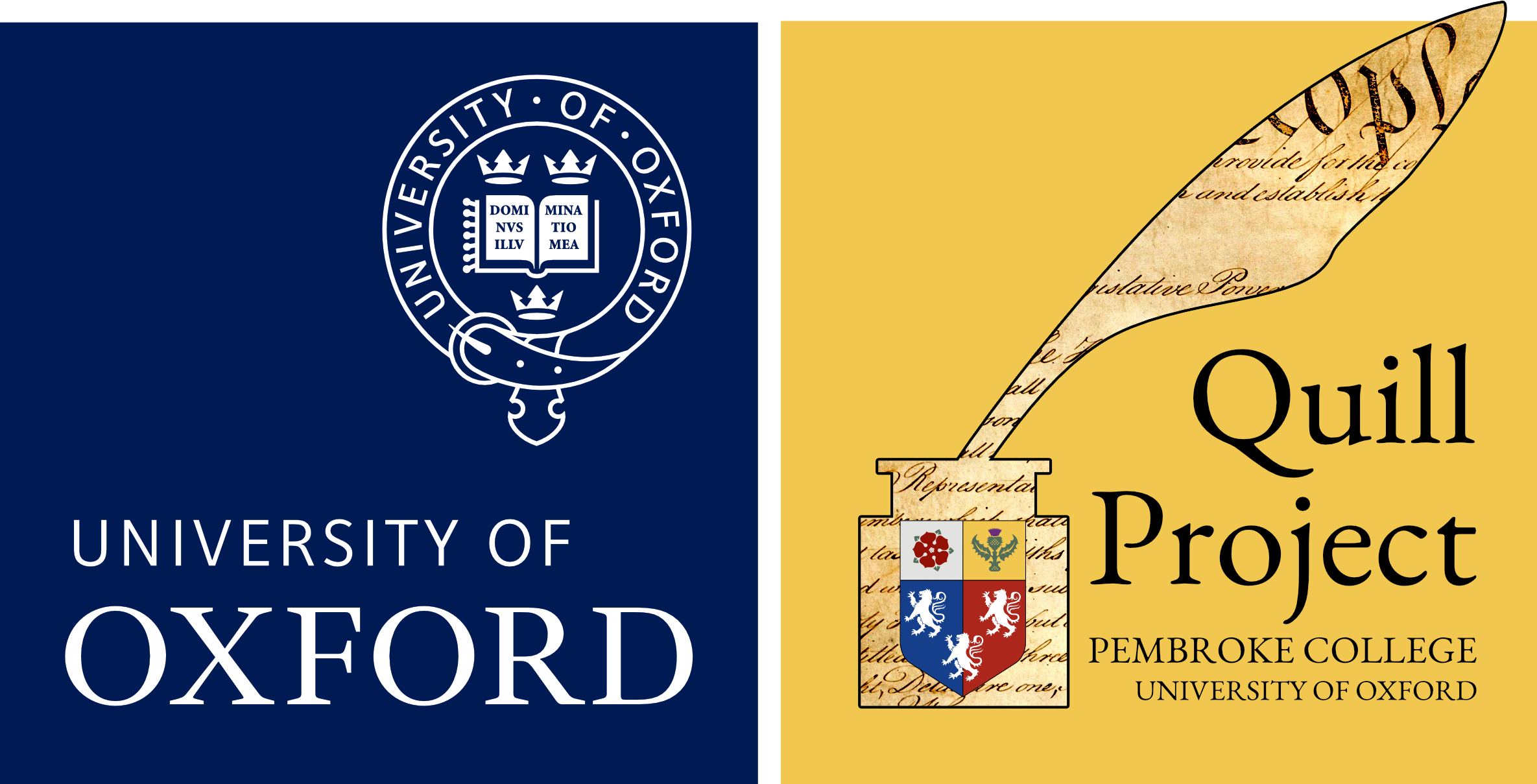A brief guide > The Quill approach > Meet the team > Access the platform
The Quill Approach to 1787
The Quill 1787 Constitutional Convention project models the debates that occurred over proposed provisions and the specific wording of those provisions in drafting the United States Constitution.
The project uses primary source texts and first-hand accounts of the Convention to track how the text of the Constitution evolved over the three and a half months it was negotiated. Tracking the document stages in this way allows readers to gain an understanding of the procedures followed (or not followed) by the delegates as they debated and also establishes the context within which the Constitution’s foundational decisions were made.
Unlike modern American congressional proceedings, the Convention was unicameral. The majority of the action and decision making occurred in the plenary session or in its Committee of the Whole, and various subcommittees were appointed to accomplish specific tasks or reach certain compromises.
Several accounts of the Convention recorded by delegates survive, and looming large among these are the official journal (kept by secretary William Jackson) and James Madison’s notes. Given that these notes were taken on pen and paper, prior to a standardized form of shorthand, there are some expected gaps. However, to account for these lacunae in a given record the editors have reconstructed the timeline by comparing these two major sources with an attention to the fact that Jackson is typically more reliable in regards to the text of the propositions and Madison captures the order of events and content of debates more robustly than Jackson.
The two major sources were consulted with the controversies surrounding them in mind and were supplemented in the editorial process and Quill timeline with other first-hand accounts, which are valuable sources but sparser than Jackson and Madison in some respects. These include Yates’, Lansing’s, Paterson’s, and McHenry’s notes, to name a few.
Tip for Using Quill
- The Convention is where the main actions occurs, so begin there.
- The Convention resolved itself into the Committee of the Whole from 30 May 1787 to 19 June 1787, so the plenary sessions for those days appear sparse, indicating that the only action that occurred in the Convention is that it resolved into the Committee of the Whole and then the president resumed the chair before the Convention adjourned for the day. It is between these two points – the Convention agreeing to resolve into the Committee and the president resuming the chair – that the Committee of the Whole met and debated. You must therefore consult the Committee of the Whole timeline for the main events of the day. Though the Convention and Committee of the Whole sessions are represented on different timelines, if one were to think about them linearly, the entirety of the Committee of the Whole timeline for a given day would fit between the two points on the Convention timeline for that same day.



